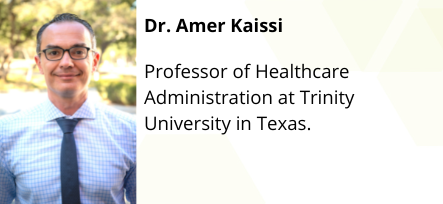The Power of Resilience

Resilience has always been an important attribute for professionals, especially in healthcare organizations. However, the recent COVID-19 pandemic has magnified the setbacks and stressors. As a result, there is in an increased need for professionals to develop and maintain resilience. Before we discuss how to achieve that, it is important to define what resilience is.
A common understanding of resilience is the ability to handle setbacks and to deal with chronic stress. Setbacks are personal and professional challenges that may impact professionals in a negative way. And while some stress is inevitable, chronic stress can lead to extreme exhaustion and burnout and therefore needs to be prevented or at least mitigated. The main idea is that professionals have the ability to influence and impact their team’s and organization’s resilience through their words and actions. But in order to do that, they have to build and maintain their self-resilience first.
One of the most important mindset shifts for professionals to develop and maintain resilience is to realize that resilience is about how they recharge, not how they endure. The old-fashioned way of thinking, assumed that enduring, suffering, powering through and grinding out were the hallmarks of resilience. However, recent research has revealed that this view is very different from what resilience actually is. The modern evidence-based model of resilience focuses on recharging; recovering; refueling and resting. Professionals will not achieve resilience if they continue to believe that if they don’t handle all the tasks themselves, their work will fall apart. Other common mindset obstacles include worn-out beliefs that professionals should work every evening, weekend and vacation non-stop, and that this is the only way to demonstrate loyalty and commitment to the team and to the organization.
Some of the professionals that I interact with are starting to realize that rest is not something that the world is going to give them. If they want rest, they have to take it by being intentional about scheduling strategic breaks throughout the day, taking time off for lunch and going out on some days, and occasionally coming in late or leaving early. This rest time can be spent just enjoying the outdoors or taking a walk, or could be dedicated to reflection. Regardless, it is highly advised that this time is spent in solitude, away from co-workers and family members.
Professionals will benefit from scheduling some reflection time in order to zoom out from the day-to-day issues, and to focus on big-picture strategic initiatives or career planning. This could be achieved by staying away from any device (laptop, phone, etc.) and sitting in a room with a pen and paper to record thoughts. Some professionals find it very helpful to develop a journaling habit where they regularly write their ideas and reflect on events they have encountered. Others find that meditation (of any type) is what allows them to stay centered and present.
If these practices sound like they require precious times that most professionals don’t have, it is important to remember that a flexible approach is needed, whereby professionals can block small amounts of time, such as 10 minutes for a walk after lunch or 20 minutes for deep reflection every Monday morning for example. A practical exercise that I recommend is the “3 by 2 Morning Prioritization” where a professional, instead of jumping straight into answering emails, can start their day with:
- 2 minutes: Sit and let the mind settle into focus, calm and clarity
- 2 minutes: Consider most important priorities for the day
- 2 minutes: Plot priority activities into calendar
This practice, which takes only 6 minutes every day, was popularized by the consulting firm Accenture and can significantly improve presence and focus.
Achieving work-life balance, especially during difficult times, is not a realistic goal for professionals. Instead, the aim should be to achieve alignment by establishing boundaries between professional and personal lives. Setting boundaries is about deciding when to work and when not to work. But professionals need to acknowledge that sometimes they have busy seasons with extreme imbalances. The important consideration is to be flexible and to work intentionally to re-establish the boundaries when the busy season is over. For example, a professional may set the following rules for herself: No work after 7:00 pm on weeknights and no work on Sundays or days off. However, she realizes that she works in a 24/7 industry where people’s lives are at stake, and therefore she builds in flexibility by aiming to follow these rules 85% of the time. It is a practical approach that recognizes that professionals may need to work on evenings and weekends during busy seasons with tight deadlines, but that should the exception, not the rule.
Amer Kaissi, Ph.D. is a Professional Speaker, Executive Coach, and Author of the book “Humbitious: The Power of Low-Ego & High-Drive Leadership”